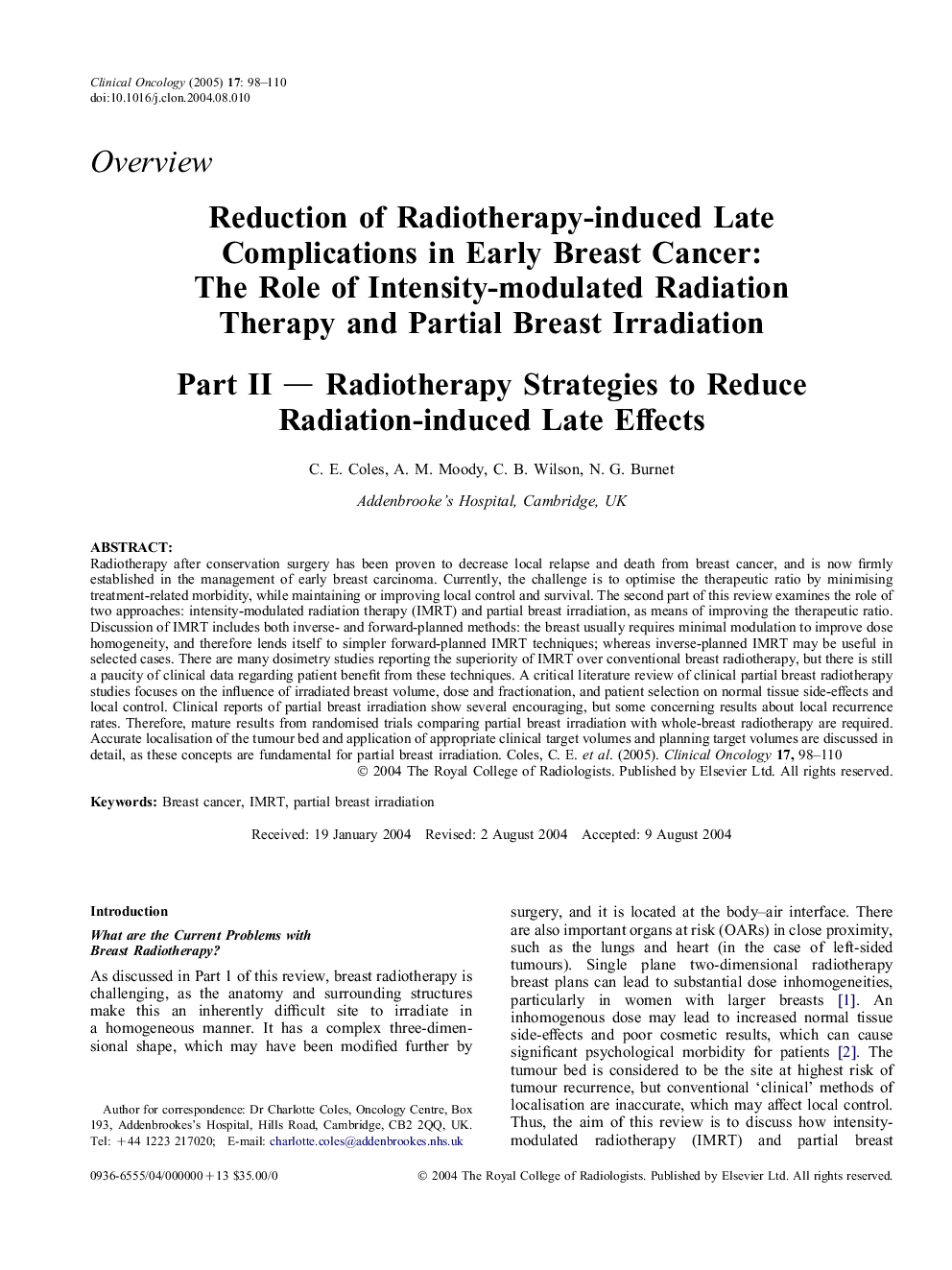| Article ID | Journal | Published Year | Pages | File Type |
|---|---|---|---|---|
| 9601241 | Clinical Oncology | 2005 | 13 Pages |
Abstract
Radiotherapy after conservation surgery has been proven to decrease local relapse and death from breast cancer, and is now firmly established in the management of early breast carcinoma. Currently, the challenge is to optimise the therapeutic ratio by minimising treatment-related morbidity, while maintaining or improving local control and survival. The second part of this review examines the role of two approaches: intensity-modulated radiation therapy (IMRT) and partial breast irradiation, as means of improving the therapeutic ratio. Discussion of IMRT includes both inverse- and forward-planned methods: the breast usually requires minimal modulation to improve dose homogeneity, and therefore lends itself to simpler forward-planned IMRT techniques; whereas inverse-planned IMRT may be useful in selected cases. There are many dosimetry studies reporting the superiority of IMRT over conventional breast radiotherapy, but there is still a paucity of clinical data regarding patient benefit from these techniques. A critical literature review of clinical partial breast radiotherapy studies focuses on the influence of irradiated breast volume, dose and fractionation, and patient selection on normal tissue side-effects and local control. Clinical reports of partial breast irradiation show several encouraging, but some concerning results about local recurrence rates. Therefore, mature results from randomised trials comparing partial breast irradiation with whole-breast radiotherapy are required. Accurate localisation of the tumour bed and application of appropriate clinical target volumes and planning target volumes are discussed in detail, as these concepts are fundamental for partial breast irradiation.
Related Topics
Health Sciences
Medicine and Dentistry
Oncology
Authors
C.E. Coles, A.M. Moody, C.B. Wilson, N.G. Burnet,
